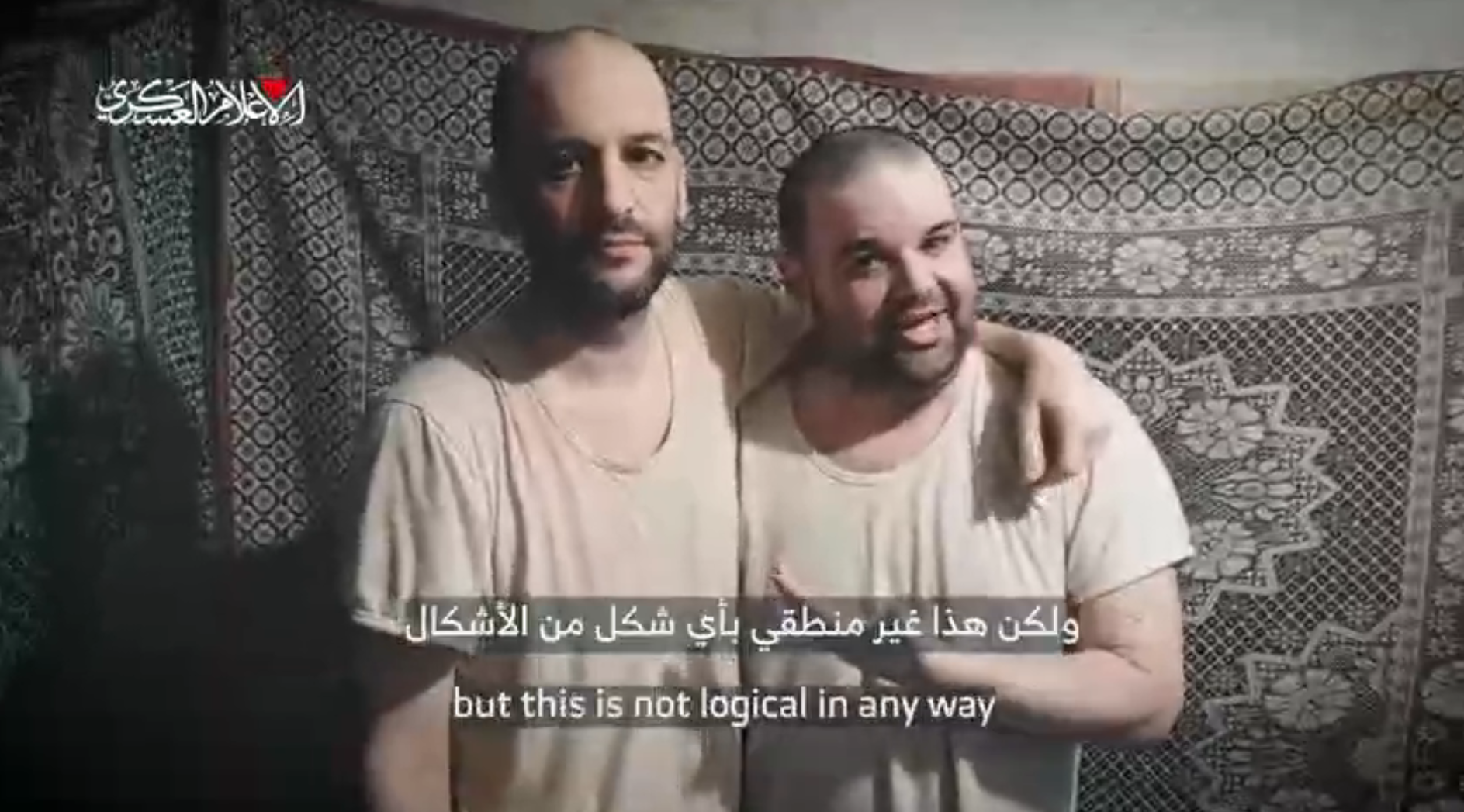
Hamas Releases New Hostage Video, Intensifying Pressure on Israel Amid Ceasefire Uncertainty
As the initial phase of the truce between Israel and Hamas concludes, and uncertainty looms over the form the next phase will take, Hamas’s armed wing, the Ezzedine al-Qassam Brigades, has released a new video featuring hostages. This marks another instance of the group utilizing hostage videos as a communication tool, aiming to exert greater pressure on the Israeli government.
The video depicts three individuals with uncovered faces. Two of them are purportedly hostages previously released in February. A third, also with his face visible, appeals to the Israeli government in Hebrew, urging them to secure his release. Two additional men appear in the video, but their faces are blurred. The video concludes with a stark warning: "Only a ceasefire agreement will bring them back alive."
Israeli media outlets have identified the two primary hostages visible in the video as Yair and Eitan Horn, two brothers. Yair was released 15 days ago, while Eitan remains in captivity. Shortly after the video’s release, the Forum of Hostage Families issued a statement indicating that the Horn family, who initially sought to prevent the video’s dissemination, has now authorized its release.
"Our hearts break seeing Eitan in this difficult situation, saying goodbye to his brother who is being released while he remains a prisoner in Hamas’s hell, already for 512 days," the family stated. "We can read the despair and fear he feels in Eitan’s eyes."
The family further noted that since his return from captivity, Yair "has not stopped thinking and acting for Eitan and all the hostages he met in captivity and who are still there." They concluded with an urgent appeal to Israeli authorities: "Look Eitan in the eyes. Do not stop the agreement that has already returned dozens of hostages to us. Their time is running out! Bring them all home, now."
The release of this video comes at a critical juncture. The initial ceasefire, which facilitated the exchange of hostages held by Hamas for Palestinian prisoners held by Israel, has recently ended. The future of the truce remains uncertain, and negotiations for an extended ceasefire or a more permanent resolution are ongoing. Hamas’s decision to release this video can be interpreted as a strategic move to strengthen their negotiating position and increase the pressure on Israel to meet their demands.
The video’s content is clearly designed to evoke empathy and concern for the hostages, particularly Eitan Horn, who has been held captive for an extended period. The family’s statement further amplifies the emotional impact, highlighting the anguish and desperation experienced by both the hostages and their loved ones.
By showing the hostages speaking directly to the Israeli government and pleading for their release, Hamas aims to create a sense of urgency and compel the government to take decisive action. The warning that "only a ceasefire agreement will bring them back alive" underscores the group’s demand for a comprehensive agreement that addresses their key concerns.
Israeli Prime Minister Benjamin Netanyahu responded to the video by asserting that "Israel will not be intimidated by Hamas propaganda." He emphasized that "the terrorist organization Hamas tonight disseminated another cruel propaganda video, in which our hostages are forced to recite a speech of psychological warfare."
The Prime Minister’s office released a statement calling for an agreement to secure the hostages’ release. "We will continue to act relentlessly to bring back all our hostages and achieve all of Israel’s war aims," the statement added.
Netanyahu’s response reflects the Israeli government’s determination to maintain its strategic objectives in the conflict while simultaneously seeking the release of the hostages. The government faces immense pressure from the public and the families of the hostages to secure their safe return, but it also remains committed to dismantling Hamas’s military capabilities and ensuring Israel’s long-term security.
The release of the Hamas video and the ensuing reactions highlight the complex and multifaceted nature of the conflict. The situation is further complicated by the ongoing negotiations for a ceasefire, the divergent interests and objectives of the parties involved, and the profound humanitarian crisis in Gaza.
The hostage issue remains a central point of contention, with Hamas using the hostages as leverage to achieve its political and strategic goals. Israel, on the other hand, views the release of the hostages as a paramount humanitarian imperative and a critical step towards de-escalating the conflict.
The coming days and weeks will be crucial in determining the future trajectory of the conflict. Whether a durable ceasefire agreement can be reached, and whether the remaining hostages will be released, remains to be seen. The decisions made by both Israel and Hamas will have far-reaching consequences for the region and the lives of countless individuals. The international community, particularly the United States and other regional powers, will continue to play a vital role in facilitating negotiations and seeking a peaceful resolution to the conflict. The humanitarian situation in Gaza also requires urgent attention, with millions of people in need of food, water, shelter, and medical assistance.
